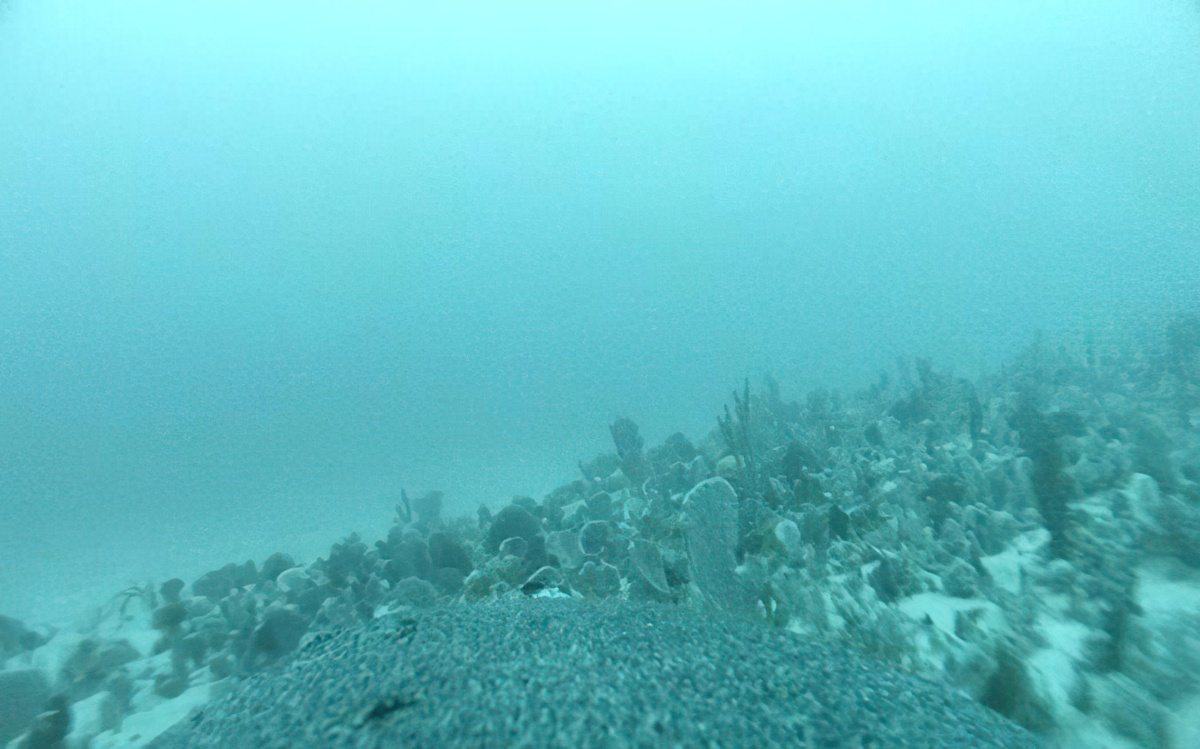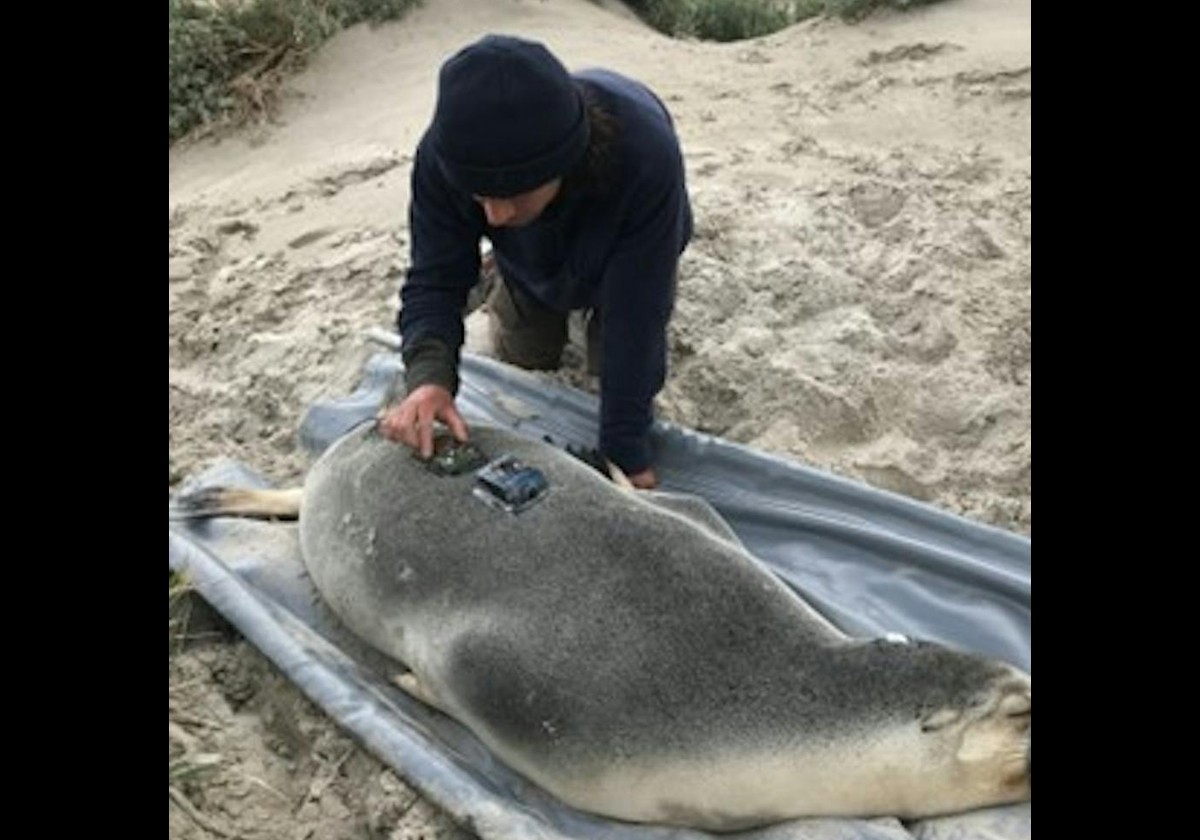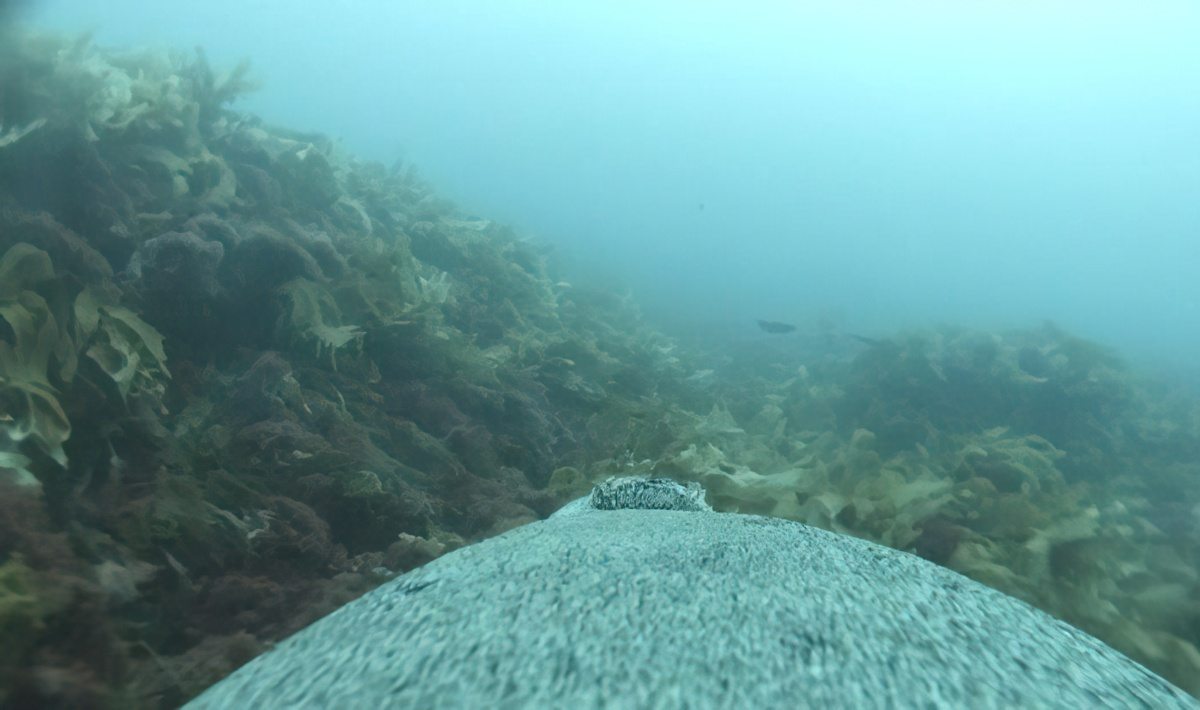Kangaroo Island, Australia —(Map)
Australian scientists have come up with a clever way to study hard-to-reach areas of the sea floor: they attached cameras to sea lions. The resulting videos have given scientists new information about the endangered sea lions, and also about the sea floor.
Australian sea lions are endangered. Their numbers have dropped by over 60% in the last 40 years. Scientists wanted to learn more about how sea lions use different areas of the sea floor to gather food.
But studying the sea floor is difficult. Underwater robots are expensive, they often move slowly, and they can’t go everywhere.

(Source: Angelakis et al. 2024. FrontiersIn.org.)
So scientists at the University of Adelaide and SARDI (South Australian Research and Development Institute) came up with a different plan – attaching cameras to sea lions. The sea lions could cover large areas of the ocean floor quickly, and dive deeply to places humans can’t reach.
The researchers used eight healthy females from two different groups of sea lions. They chose females because they would soon return to land to feed their young pups. That meant the scientists could easily get the cameras back.
The scientists put the sea lions to sleep and temporarily attached a light-weight camera and GPS tracker to the animals. The team worked with animal experts to make sure the sea lions were treated well. Before long, the sea lions woke up and headed out to sea.

(Source: Roger Kirkwood FrontiersIn.org.)
Over the next few days, the eight sea lions traveled 348 miles (560 kilometers) underwater, diving as deep as 360 feet (110 meters) below the surface. In all, the animals collected 89 hours of video, letting the researchers see exactly what the animals saw.
The results were exciting. The videos showed the sea lions hunting for food. The scientists learned that different sea lions like different kinds of food. The videos also proved that mother sea lions teach their pups how to hunt.
The videos recorded the sea floor in places that had never been seen before. The researchers were able to identify six different types of sea floor environments, such as areas with lots of marine plants, or with bare sand. The videos gave the team a good idea of the kinds of plants and animals living in each of those environments.

(Source: Angelakis et al. 2024. FrontiersIn.org.)
Using Artificial Intelligence (AI) and the information from the videos, the researchers came up with a tool that can predict what the sea floor is like. If the AI tool is given the sea’s temperature at the surface, and how far the location is from land, it can guess what the ocean floor will be like. And it’s correct 98% of the time.
The scientists can now use that tool to make good predictions about what the sea floor is like, even in areas that haven’t been studied.
Thanks to the sea lions, the scientists now have a better idea about the kinds of areas used by these endangered animals, and where these areas can be found.
As one of the researchers said, “They’re giving us a window into their world that we haven’t had before.”
😕
This map has not been loaded because of your cookie choices. To view the content, you can accept 'Non-necessary' cookies.
